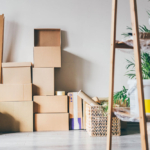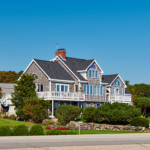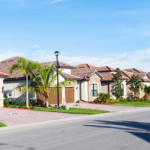Introduction
Living in a flood-prone area can be both beautiful and challenging. Proximity to water bodies offers stunning views and recreational opportunities, but it also comes with the risk of flooding. As a homeowner in a flood zone, protecting your property against potential water damage is essential. In this blog, we’ll explore practical tips to help you safeguard your home and build resilience against flood-related risks.
“Preparation today ensures protection tomorrow. Safeguard your home and embrace resilience in the face of nature’s challenges.”
1. Know Your Flood Risk
Understanding your area’s flood risk is the first step toward protecting your home. Contact local government agencies or consult flood maps to assess the probability of flooding on your property. Familiarize yourself with flood warning systems and stay vigilant during heavy rainfall or storms.
2. Elevate Your Home
If feasible, elevate your home above the base flood elevation level to reduce flood damage risks. Consult a professional contractor experienced in flood-proofing to determine the best elevation strategy for your property.
3. Install Flood Barriers and Seals
Flood barriers and seals offer an additional layer of protection. Install barriers around vulnerable areas like doors, windows, and vents. Seal cracks and gaps in your foundation and walls to prevent water intrusion during minor flooding events.
4. Waterproof Your Basement
Basements are especially susceptible to flooding. Apply waterproof coatings to basement walls and install a sump pump system to remove excess water efficiently. Consider adding a battery backup for the sump pump to ensure functionality during power outages.
5. Maintain Gutters and Downspouts
Regular maintenance of gutters and downspouts is critical for proper water drainage. Clear clogs to prevent water overflow that could damage your foundation and siding. Add extensions to downspouts to direct water further away from your home.
6. Secure Electrical Systems
Elevate electrical outlets, switches, and circuit breakers at least one foot above the expected flood level to minimize electrical hazards. Use waterproof casings for electrical components and raise appliances on concrete blocks to protect them from water damage.
7. Choose Flood-Resistant Materials
Opt for flood-resistant materials during renovations or home improvements. Use water-resistant materials for walls and flooring, and consider pressure-treated wood or metal for structural components. These materials are designed to withstand water exposure and reduce damage.
8. Create a Family Emergency Plan
Develop a detailed family emergency plan, including evacuation routes and a designated safe shelter. Make sure all family members are familiar with the plan and conduct regular practice drills to ensure preparedness.
9. Invest in Flood Insurance
Standard homeowners’ insurance typically does not cover flood damage. Purchase flood insurance through the National Flood Insurance Program (NFIP) or private insurers to safeguard your home and belongings against flood-related losses.
Final Thoughts
Living in a flood zone requires proactive measures to protect your home from potential water damage. By understanding your flood risk, elevating your home, installing flood barriers, and investing in flood insurance, you can strengthen your home’s resilience against flooding. Regular maintenance and a comprehensive emergency plan will help you stay prepared for any flood-related challenges.











